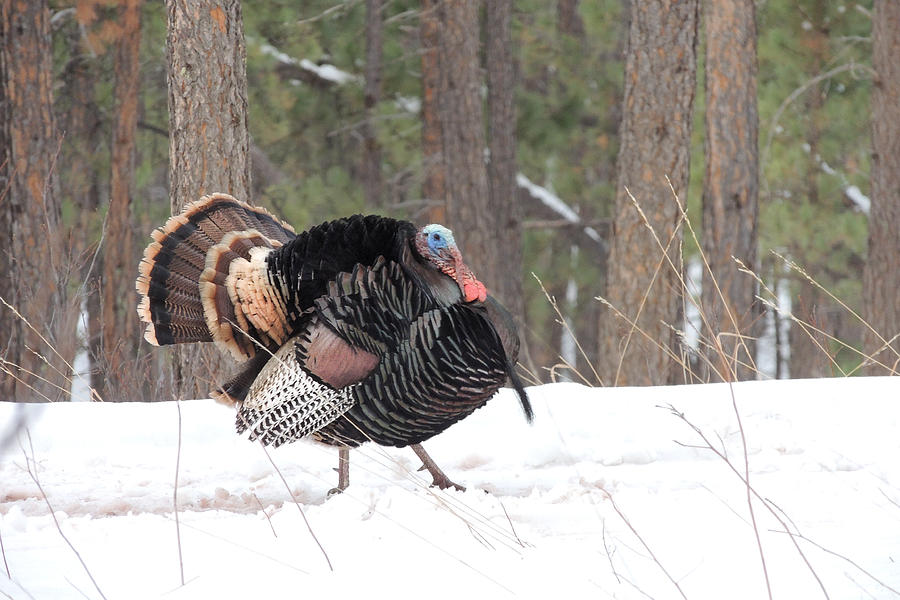
Strutting Tom

by Greni Graph
Title
Strutting Tom
Artist
Greni Graph
Medium
Photograph - Photography
Description
#201304131124 The Wild Turkey (Meleagris gallopavo) is native to North America and is the heaviest member of the diverse Galliformes. It is the same species as the domestic turkey, which was originally derived from a southern Mexican subspecies of Wild Turkey (not the related Ocellated Turkey). Although native to North America, the Wild Turkey got its name due to the trade routes in place. During the 16th Century, the major trade route from the Americas and Asia required the goods to go to Constantinople in Turkey before being sent to Britain. The British at the time therefore, associated the Wild Turkey with the country Turkey and the name stuck. Adult wild turkeys have long reddish-yellow to grayish-green legs. The body feathers are generally blackish and dark brown overall with a coppery sheen that becomes more complex in adult males. Adult males, called toms or gobblers, have a large, featherless, reddish head, red throat, and red wattles on the throat and neck. The head has fleshy growths called caruncles. Juvenile males are called jakes, the difference between an adult male and a juvenile is that the jake has a very short beard and his tail fan has longer feathers in the middle. The adult male's tail fan will be all the same length. When males are excited, a fleshy flap on the bill expands, and this, the wattles and the bare skin of the head and neck all become engorged with blood, almost concealing the eyes and bill. The long fleshy object over a male's beak is called a snood. When a male turkey is excited, its head turns blue; when ready to fight, it turns red. Each foot has three toes in front, with a shorter, rear-facing toe in back; males have a spur behind each of their lower legs. Males are polygamous, mating with as many hens as they can. Male wild turkeys display for females by puffing out their feathers, spreading out their tails and dragging their wings. This behavior is most commonly referred to as strutting. Their heads and necks are colored brilliantly with red, blue and white. The color can change with the turkey's mood, with a solid white head and neck being the most excited. They use gobbling, drumming/booming and spitting as signs of social dominance, and to attract females. Courtship begins during the months of March and April, which is when turkeys are still flocked together in winter areas. Males may be seen courting in groups, often with the dominant male gobbling, spreading their tail feathers (strutting), drumming/booming and spitting. In a study, the average dominant male that courted as part of a pair of males fathered six more eggs than males that courted alone. Genetic analysis of pairs of males courting together shows that they are close relatives, with half of their genetic material being identical. The theory behind the team-courtship is that the less dominant male would have a greater chance of passing along shared genetic material than if it were courting alone. dakota light photography, dakota light, dakota, turkey, tom, strut, merriam's wild turkey, south dakota, fan, fanning
Uploaded
April 14th, 2013
Statistics
Viewed 527 Times - Last Visitor from Cambridge, MA on 04/25/2024 at 6:40 PM
Embed
Share
Sales Sheet
Comments (1)

Nadine and Bob Johnston
Was very pleased to Publish your Unique artwork the ARTISTS NEWS an internet Publication today. Though its not always possible for me to comment due to administering 14 groups, just had to say we like this very much....
Greni Graph replied:
Thank you very much, Nadine and Bob, for the wonderful comments... and for publishing Strutting Tom in the ARTISTS NEWS!























































